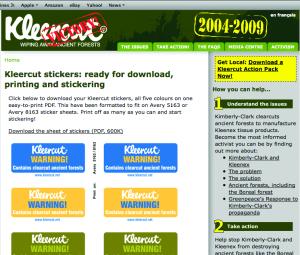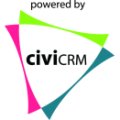TACTIC 6: VIDEO
UNDERSTAND YOUR CONNECTIONS
manage your contacts
download this tactic card (pdf 796kb)
watch the full video
THIS TACTIC IS GOOD FOR UNDERSTANDING YOUR CONNECTIONS AND RELATIONSHIPS SO YOU CAN MAKE THE MOST OF YOUR NETWORKS
EXAMPLES FROM THE VIDEO
|
|
Open source software advocates and programmers CiviCRM is a free and open source software tool that can be used to manage your relationships. It can send and track responses from bulk emails and be used to help plan events and fundraise. Like an address book, CiviCRM organises constituents' contact information in a database, but it also tracks interactions with people (emails sent, emails responded to, live events attended) and people’s relationships with each other. CiviCRM stores this data on your own web server, which means you can install security to ensure the information is private and you can access it anywhere with an internet connection.
TOOLS USED: CiviCRM requires a web server running PHP and MySQL, with an option to use Drupal or Joomla or a standalone content management system (CMS).
LINKS TO LEARN MORE: |
|
|
Mercy Corps and Frontline SMS As part of reconstruction work after the Asian tsunami, Mercy Corps used FrontlineSMS to provide people with highly targeted relief information by mobile phone. FrontlineSMS is a free and open source software tool that allows you to send text messages to customised groups of contacts. In this way, Mercy Corps could send different information to different groups of people; by using their mobile phones, tsunami-effected people had access to up-to-date information.
TOOLS USED: FrontlineSMS, mobile phones
LINKS TO LEARN MORE: |
TACTIC 6: PLAN YOUR ACTION
UNDERSTAND YOUR CONNECTIONS
manage your contacts
download this tactic card (pdf 796kb)

GREENPEACE USA
Plan your action
- Building a database of contacts can be challenging. How will you know the relationship people want to have with you? Do they want one-off information about a specific action, or are they happy to receive regular news on more general or ongoing campaign issues?
- The more accurate the data you have about your contacts, the more powerful the connections with them will be. Evaluate how to keep your database of contacts as current and as complete as possible.
- Is gathering people's contact information using email more reliable than using a sign-up form on a website? Can posting a profile for your campaign on social network sites be a way to ask supporters to join you? It is important to plan carefully how you will collect contact information from people and that you tell people why you are collecting it and how you will use it.
- Customise the information you provide to people as much as possible. Sending out a mass message to all your supporters may cause people to ignore all of your messages and end their relationship with you. You can ask your supporters what format (an email, a text message, a video), type (newsletter, specific types of campaigns, events), and frequency (daily, weekly, monthly) of communication they prefer.
- In addition to sending information to your contacts, you can also connect people to one another to engage in live events or actions, or to form local or more specific actions or campaigns.
Do it yourselfAsk
- What people do you most need to add to your contact database, and how will you reach them? Once recruited, how will you continue to engage them in your campaign?
- How will you use the media to draw attention to your campaign and to bring more people into it?
- How can you use people, already recruited to the campaign, to recruit others by forwarding your email alerts, sharing videos, posting images to their blogs and social network site profiles?
- What is the process by which people can be removed from your database in an easy way?
- What steps will you take to ensure that your group's data is secure and kept private? Will you host this data on your own server? How will it be backed up in case of seizure or loss?
- What kinds of actions that you want people to take are most important to track – events organised, new contacts recruited, petitions signed, emails sent?
Different ways you can do this
- In addition to tracking your supporters, organise the contact information for those who have the power to make the change you want to see – even if these people are opposed to your campaign. You will then have this information on hand when you need to send (or get your supporters to send) these people targeted campaign emails and you can find ways to track their responses.
- Recruit people to sign up for mobile alerts from your campaign by conducting a poll on your issue that they can respond to with a text message.
- Create a support-base map, of where your supporters are most concentrated, based on information they provided you with consent.
- Help supporters to organise their own campaign events by offering to connect them with other people in your campaign near to them. By using contact management tools, you can do this without revealing people’s contact information to others.
- At a live event related to your campaign, ask people to sign up to receive targeted text message or email alerts that provide live reports or relay information you have already prepared.
|
FEATURED TOOL Keep in contact with people who support you The Organizers' Database is free software for making it easier to track your communications with your constituents, campaigners, and other contacts. In addition to storing your contacts' names and addresses, the Organizers' Database is also good for formatting this contact information into emails, letters, and mailing address labels. It can also be used to track donations made and follow-up communications sent. This programme works only on computers running the Windows operating system. CiviCRM can also be used for all operating systems. |
TIPS RICHARD BROOKS, FROM KLEERCUT AND GREENPEACE, ON CAPACITY: "If organising people online is an important tool for your campaign, make sure you have the capacity to continue. We expected the campaign to finish earlier than it did, and when we had to shift our focus to include other tactics, we didn’t have the capacity to continue the online organising as much as we had when we began."
KEN BANKS, FROM FRONTLINESMS, ON TARGETING YOUR MESSAGE: "In terms of building relationships with people it is clearly important that you do not upset them, annoy them or antagonise them by sending information to them that they do not actually want. From the operational side, to make sure that doesn’t happen, it’s important that you group people. Depending on what software or system you are using, you can very easily identify and target specific people depending on what specific message you are planning to send."
MICHAL MACH, OF CIVICRM, ON GETTING SUPPORT WHEN USING OPEN SOURCE TOOLS: "Online communities exist around many tools, especially open source software tools, and these communities play an important role by helping people to customise software to meet their own needs and contexts. So when you do use a particular tool for managing your contacts, my advice would be to share your experiences with others so they can also benefit." |
TACTIC 6: CASE STUDY
UNDERSTAND YOUR CONNECTIONS
manage your contacts
download this tactic card (pdf 796kb)

Case Study
| TITLE: WHO: WHERE: WEBSITE: |
Kleercut Greenpeace North America Kleercut campaign website |
DESCRIPTION
Kleercut is a campaign implemented by Greenpeace to end the use of virgin wood fibre in Kimberly-Clark products. CiviCRM was used to collect contact information from people who visited the Kleercut website and to send them email alerts once or twice a month. In these alerts, people were asked to take an action, for example, to return to the Kleercut website to send a targeted email to Kimberly-Clark shareholders, or to attend a direct action near them. Kleercut also connected advocates to one another, allowing them to create regional and city-based email lists that they managed themselves. Richard Brooks who worked on the campaign says, "We couldn’t organise every protest in every town and city, so it was important to give people tools to self-organise. Instead of five campaigners, we had 10,000 people able to do things in the physical world because of tools we made available: a Kleercut action pack, a toolbook, posters, media releases." CiviCRM was used to track people’s engagement and Kleercut could see that 15-20% of the people it emailed took a follow-up action – "a higher response rate than the general Greenpeace list," says Richard. In August 2009, the Kleercut campaign ended successfully when Kimberly-Clark agreed to introduce standards for fibre content in its products.
| TOOLS USED: | Drupal for the website and CiviCRM to manage contacts. Richard says: "As more tools became available, like Facebook, YouTube, MySpace and Twitter, we started using those as well." |
| REACH: | Over five years of the campaign, 30,000 people signed up, with most in North America. Website was available in English and French. |
| RESOURCES: | Once publishing and contact management tools were launched, there was no additional significant cost to support the technology behind the campaign. "A lot of the web content – stories, blogs, and action items – 80% of that was done by campaigners," says Richard. |
| TIME: | 4 to 5 months to implement and customise website and constituent management systems. Campaign launched November 2004, ended August 2009. |
LEVEL Of DIFFICULTY: 3 out of 5
COST: Several thousand US dollars for outside contractors to create the website, integrate Drupal and CiviCRM, and design logo. Web hosting cost USD$50-$60 per month. Plus ongoing staff costs to manage and implement the project.
LINKS TO LEARN MORE:

